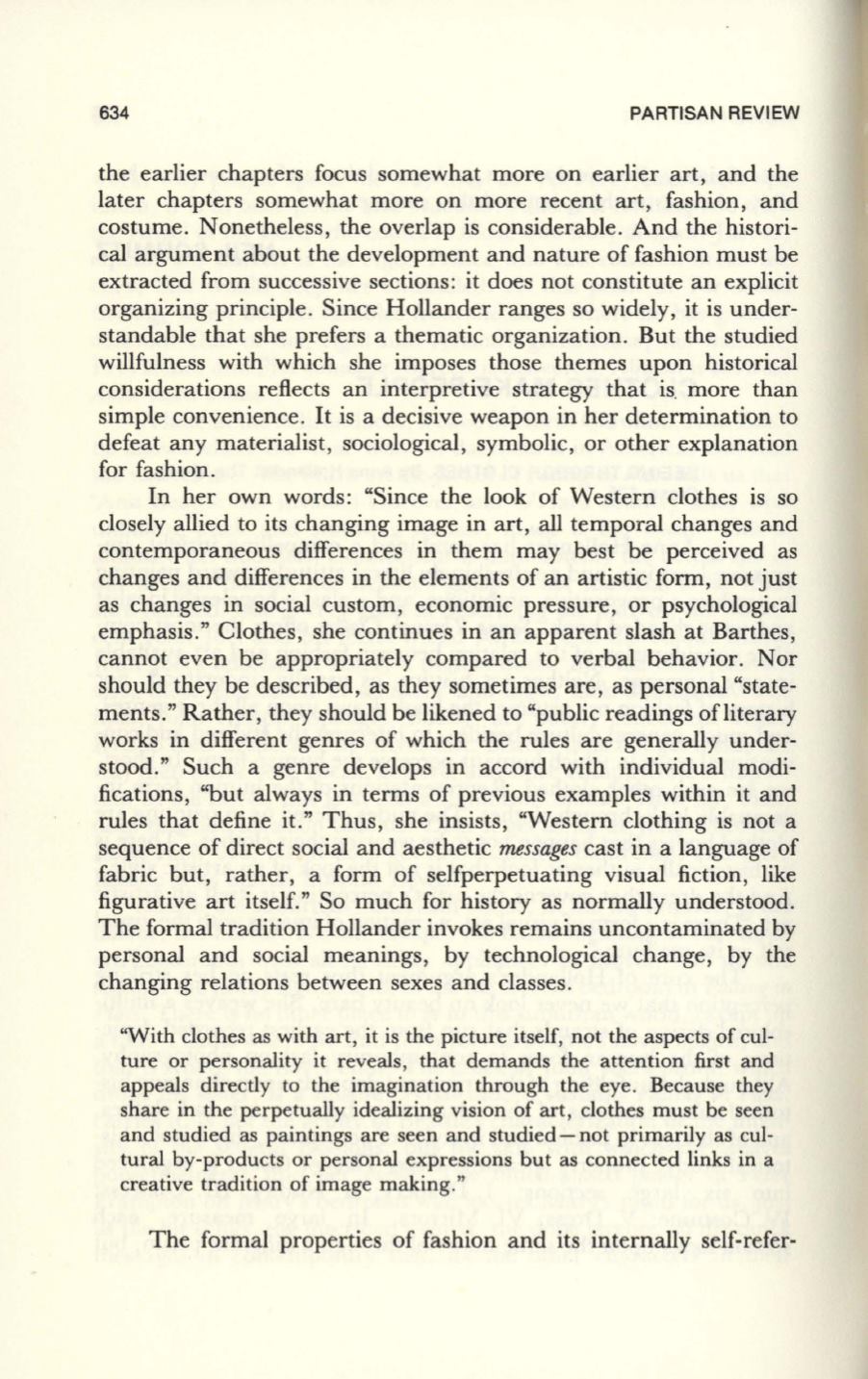
634
PARTISAN REVIEW
the earlier chapters focus somewhat more on earlier art, and the
later chapters somewhat more on more recent art, fashion, and
costume. Nonetheless , the overlap is considerable . And the histori-
cal argument about the development and nature of fashion must be
extracted from successive sections: it does not constitute an explicit
organizing principle . Since Hollander ranges so widely, it is under–
standable that she prefers a thematic organization. But the studied
willfulness with which she imposes those themes upon historical
considerations reflects an interpretive strategy that is. more than
simple convenience. It is a decisive weapon in her determination to
defeat any materialist, sociological , symbolic, or other explanation
for fashion.
In her own words : "Since the look of Western clothes is so
closely allied to its changing image in art, all temporal changes and
contemporaneous differences in them may best be perceived as
changes and differences in the elements of an artistic form, not just
as changes in social custom, economic pressure, or psychological
emphasis." Clothes, she continues in an apparent slash at Barthes,
cannot even be appropriately compared to verbal behavior. Nor
should they be described, as they sometimes are, as personal "state–
ments ." Rather, they should be likened to "public readings ofliterary
works in different genres of which the rules are generally under–
stood ." Such a genre develops in accord with individual modi–
fications, "but always in terms of previous examples within it and
rules that define it." Thus, she insists, "Western clothing is not a
sequence of direct social and aesthetic
messages
cast in a language of
fabric but, rather , a form of selfperpetuating visual fiction , like
figurative art itself." So much for history as normally understood.
The formal tradition Hollander invokes remains uncontaminated by
personal and social meanings, by technological change, by the
changing relations between sexes and classes .
"With clothes as with art, it is the picture itself, not the aspects of cul–
ture or personality it reveals, that demands the attention first and
appeals directly to the imagination through the eye . Because they
share in the perpetually idealizing vision of art, clothes must be seen
and studied as paintings are seen and studied - not primarily as cul–
tural by-products or personal expressions but as connected links in a
creative tradition of image making."
The formal properties of fashion and its internally self-refer-


